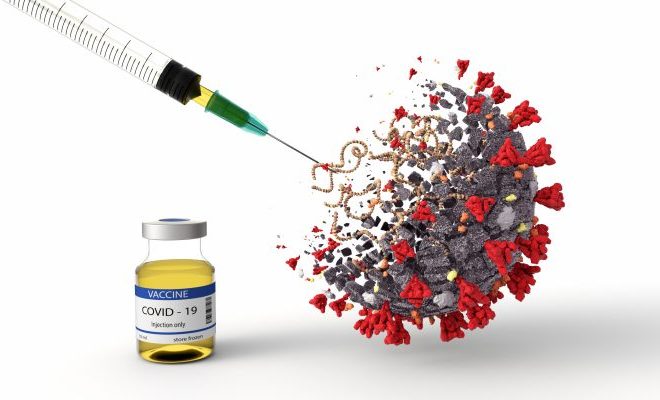
The Science Behind Allergy Prevention for Long-Term Success
Allergies are one of the most common chronic health conditions, affecting millions of people worldwide. From pollen and dust mites to food allergens like nuts and shellfish, allergies can range from mild irritations to life-threatening reactions. Despite the prevalence of allergies, the science behind allergy prevention remains an evolving and often complex field of study. Researchers are continuously investigating how allergies develop, the underlying mechanisms, and how long-term prevention strategies can be most effectively implemented.
In this article, we will explore the science behind allergy prevention, highlighting key factors that contribute to the development of allergies and offering evidence-backed strategies for preventing allergic reactions in the long term.
Understanding Allergies: The Immune System at Play
To understand allergy prevention, it’s important to first grasp the basics of how allergies occur. An allergy is an exaggerated immune system response to a substance (allergen) that the body mistakenly identifies as harmful, even though it’s usually harmless. The immune system reacts by producing antibodies, primarily immunoglobulin E (IgE), which trigger the release of chemicals like histamine. These chemicals cause the symptoms typically associated with allergies—itching, swelling, sneezing, and even more severe reactions like anaphylaxis.
In the case of environmental allergens, such as pollen or pet dander, the body’s immune system becomes sensitized after initial exposure. The next time the individual comes into contact with the same allergen, their immune system responds aggressively, leading to symptoms that can interfere with daily life. Similarly, food allergies occur when the immune system identifies certain proteins in food as harmful, even though they pose no real danger to the body.
Genetic and Environmental Factors
The development of allergies is influenced by both genetic and environmental factors. If one or both parents have allergies, there is a higher likelihood that their child will develop allergic conditions as well. This genetic predisposition is due to the inheritance of certain genes that affect the immune system’s response to allergens.
However, genetics alone does not determine whether an individual will develop allergies. Environmental factors play a crucial role in shaping immune system responses. The so-called “hygiene hypothesis” is a leading theory in allergy research. This hypothesis suggests that a lack of exposure to infections and environmental microbes, particularly in early childhood, may contribute to the rise in allergic diseases. Essentially, the immune system may become overly sensitive and begin to react to harmless substances because it hasn’t been adequately “trained” to deal with pathogens.
Thus, while genetics may predispose an individual to allergies, their environmental exposures play a significant role in the likelihood of developing allergies over time. This insight into the nature versus nurture debate forms the basis for many allergy prevention strategies.
Key Strategies for Allergy Prevention
-
Early Exposure to Allergens: A Double-Edged Sword
One of the most promising areas of allergy prevention research involves early exposure to allergens. For years, it was common practice to avoid exposing young children to common allergens in an effort to reduce the risk of allergy development. However, recent studies suggest that controlled, early exposure to certain allergens might actually help “train” the immune system, reducing the likelihood of developing allergies later in life.
For example, research on peanut allergies has shown that introducing peanuts to infants at an early age—before the age of 12 months—can significantly lower the risk of developing an allergy to peanuts. This approach, known as “oral immunotherapy,” involves gradually introducing small amounts of allergens under controlled conditions to help the body build tolerance. This strategy is now recommended by various medical organizations for high-risk children.
However, the key to this approach is moderation and supervision. It’s important to avoid overwhelming the immune system with excessive or inappropriate exposure, as this could lead to hypersensitivity rather than tolerance. A pediatrician or allergist should always be consulted before beginning any early allergen exposure regimen.
-
Environmental Control: Reducing Allergen Exposure
Another important aspect of allergy prevention is minimizing exposure to allergens, especially for those who are genetically predisposed to allergic conditions. While complete avoidance of allergens may not always be possible, there are several strategies that can reduce exposure and help manage symptoms in the long term.
-
Pollen: During peak pollen seasons, individuals with hay fever (allergic rhinitis) can take steps to reduce exposure. Keeping windows closed, using air purifiers, and avoiding outdoor activities during high pollen count days can significantly alleviate symptoms. Showering and changing clothes after being outdoors can also help remove pollen from the skin and hair.
-
Dust Mites: Dust mites are a common trigger for asthma and allergic rhinitis. Regular cleaning of bedding, carpets, and curtains can help reduce dust mite exposure. Using hypoallergenic covers on pillows and mattresses and washing bedding in hot water regularly can further reduce dust mite populations.
-
Pets: While pet dander can be a trigger for those with animal allergies, pet owners can take steps to minimize exposure. Regular bathing and grooming of pets, using air purifiers, and keeping pets out of bedrooms are all effective strategies for reducing dander levels in the home.
-
Maintaining a Healthy Gut Microbiome
Emerging research has highlighted the importance of the gut microbiome—the community of bacteria and other microorganisms living in the digestive system—in influencing the immune system and allergic responses. A balanced gut microbiome helps train the immune system to distinguish between harmful and harmless substances, potentially preventing the development of allergies.
One way to support a healthy gut microbiome is by consuming a diet rich in prebiotics and probiotics. Prebiotics are fiber-rich foods like fruits, vegetables, and whole grains that promote the growth of beneficial bacteria, while probiotics are live bacteria found in fermented foods like yogurt, kefir, and kimchi. Studies have shown that a diverse microbiome can reduce the risk of allergic diseases and improve overall immune function.
-
Allergy Testing and Personalized Approaches
For individuals already suffering from allergies, early and accurate diagnosis through allergy testing is essential for long-term management and prevention. Skin prick tests and blood tests can help identify specific allergens and guide treatment plans. In some cases, immunotherapy (allergy shots) may be recommended to gradually desensitize the immune system to specific allergens, offering long-term relief and potentially preventing the progression of allergic conditions like asthma.
Additionally, a personalized approach to allergy prevention—one that accounts for individual triggers, genetic predisposition, and environmental factors—can be highly effective. Working with healthcare professionals to develop a tailored allergy management plan can provide relief and improve quality of life over time.
-
Lifestyle Factors: Stress Management and Nutrition
It’s well-established that lifestyle factors such as diet and stress can impact immune function and exacerbate allergic reactions. For instance, a diet high in processed foods and low in fruits and vegetables can contribute to inflammation, which may worsen allergy symptoms. Conversely, a balanced diet rich in antioxidants, vitamins, and omega-3 fatty acids can support immune health and reduce inflammation.
Additionally, chronic stress has been shown to negatively affect the immune system, potentially increasing susceptibility to allergies. Managing stress through mindfulness, exercise, and adequate sleep can play a crucial role in allergy prevention.
Conclusion: Long-Term Success in Allergy Prevention
Preventing allergies is a multifaceted endeavor that requires a combination of early intervention, environmental control, lifestyle adjustments, and personalized medical care. By understanding the science behind allergy development and taking proactive steps to manage and reduce exposure, individuals can significantly reduce their risk of developing allergies and improve their quality of life.
While complete allergy prevention may not always be feasible for everyone, implementing these strategies can greatly reduce the severity and frequency of allergic reactions, helping individuals lead healthier, more comfortable lives. With continued advancements in allergy research and prevention, the outlook for long-term allergy management is increasingly promising.



